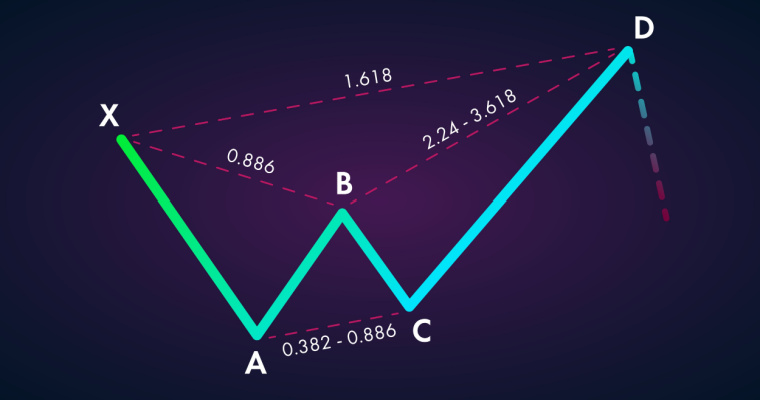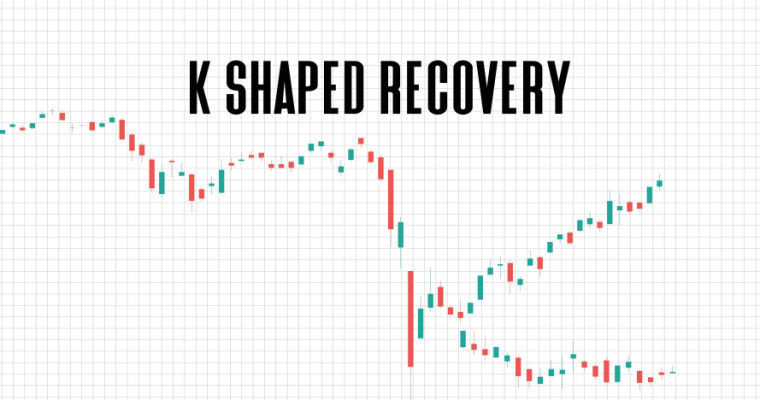Guide to Book Building – Its Types, Benefits and Process

Initial public offerings (IPOs) are priced as specified by their underwriters. The process by which an underwriter determines the price for an IPO that is being publicly offered is known as book building. It is the process by which an underwriter determines the overall price at which a company’s initial public offering (IPO) will be publicly offered. Read on to find out more about book building in detail!
What is Book Building?
The process through which an underwriter tries to establish the price at which an Initial Public Offering (IPO) would be offered is known as book building. An underwriter, typically an investment bank, builds a book by reaching out to institutional investors (including fund managers and others) to send in bids for the number of shares and the prices that they are ready to pay for them.
During the FPO or IPO, the company offers its shares to the public at a fixed price or a price range, allowing investors to choose the right price. The book building method refers to the method of offering shares by providing a price range. This method allows the market to discover prices for the securities that are on offer.
Before arriving at an issue price that will satisfy both the company offering the IPO and the market, the price discovery process involves generating and recording investor demand for shares. All of the major stock exchanges suggest it as the most efficient way to price securities.
How Does Book Building Work?
When a company decides to list its shares on the stock exchanges for the first time through an IPO, the company management decides on a variety of factors, such as share price, issue size and so on. To begin, the company’s management must appoint an underwriter to assist with the listing process. Following are the book building process steps:
1. Recruiting an Underwriter
To begin, the issuing company must hire an investment bank to serve as an underwriter. The investment bank ascertains the size of the issue and the price range of the securities with the assistance of the issuing company’s management. An investment bank creates the company prospectus, which includes all relevant information about the issuing company, such as financials, issue size, price range, future growth prospects, and so on. The share price range is made up of a floor price (the lower end of the price range) and a ceiling price (the upper end of the price range)
2. Bidding by Investors
Investors are invited by investment banks. These are typically high-net-worth individuals (HNIs) and fund managers submitting bids on the amount of shares they are willing to purchase at various prices. Occasionally, no single investment bank underwrites the entire issue. Rather, the lead investment bank collaborates with other investment banks, who use their connections to reach out to a large number of investors for the bidding process.
3. Pricing of Shares
The investment bank evaluates the aggregate demand for the issue based on the submitted bid after collecting all bids at various price levels. The underwriter uses the weighted-average method to determine the final price of the share in the issue. This final price is also referred to as the “cut-off price.” If investors have a favourable reaction to a particular issue, the ceiling price is usually a ‘cut-off price.’
4. Publicising
Most regulators and stock exchanges around the world need companies to make the details of the bidding process public. An underwriter must publicise the specifics of the investor’s bids to purchase the issuer’s shares.
5. Settlement
Finally, the allotment process commences by allocating the issue’s shares to the accepted bidders. As you are aware, investors initially bid for this issue at a different price range, however, the settlement process makes sure that all allotments occur at the issue’s cut-off price. Investors who bid more than the cut-off price have their excess money returned, while investors who bid less than the cut-off price are asked to pay the difference amount.
Also Read
What is the Book Building Process?
- The issuing company gets in touch with an investment bank and hires them as an underwriter, determining the security’s price range.
- The investment bank then solicits bids on the shares from large-scales buyers, fund managers, and others.
- The book is then constructed by listing and evaluating the aggregated demands for the issue based on the submitted bids. The cut-off price is the final price of the security.
- The underwriter makes the bid details public in order to ensure transparency throughout the process.
- Following that, shares are allocated to accepted bidders.
- The prices ascertained during the book building system do not imply that the price is the best price, nor does the company have to use the price in an IPO.
Types of Book Building
1. Accelerated Book Building
Companies can employ an accelerated book building process to obtain quick capital market access. This can occur when a company is unable to finance a short-term project through debt financing. So, the evening before the intended placement, the issuing company contacts multiple investment banks that can act as underwriters. The offer period is only open for a day or 2 days under this process, resulting in no time to market for an issue. Instead, the underwriter contacts their networks overnight and informs institutional investors about the current topic. If this investor is interested in this issue, allotment will occur immediately.
2. Partial Book Building
As the term “partial book building” implies, the issue book is partially built, with the investment banker only inviting bids from selected investors. They finalise the cut-off price by taking the weighted average of their bids. Then, other investors, such as retail investors, treat this as a fixed price. So, under the partial book building process, bidding takes place with a select group of investors.
Advantages of Book Building
- The price of the instrument is based more realistically on the commitments made by prospective investors to the issue.
- The primary goal of the book building process is to ascertain the highest market price for shares and securities, as well as the level of demand from the highest quality investors, so as to adjust pricing and allocation decisions.
- Book building is the process of determining the price of an issue based on responses from potential investors on how much they are willing to offer on issues and instruments.
- The book building process benefits the issuer company because the pricing of the issue is more reasonable since the final price is determined 11 to 12 days before the issue opens. Book building also provides faster access to capital than a public offering.
- Because the issue is pre-sold, there are no uncertainties about the issue’s outcome.
- The issuer saves money on marketing and brokerage commissions.
- Issuers can select investors based on their quality.
- Investors have a say in how issues are priced. They have a higher likelihood of getting what they want. Investors do not need to lock up large sums of capital with the issuer because they pay at the end of the process.
- The issue price is determined by the market. Because there is a small chance that the market price of the shares will fall below the issue price. As a result, the investor is less likely to suffer from investment erosion upon listing.
- Demand-based pricing is feasible.
- Efficient capital raising through enhanced issue procedures, resulting in lower issue costs, paperwork, and lead times.
- It is possible to increase/decrease the price and/or size of the issues offered.
- Allocations are made transparent.
- Improved information flow for issues, lead managers, syndicate members, and investors.
- Immediate allotment and listing of securities for placement.
Disadvantages of Book Building
- Book building is only suitable for major issues. In the case of minor issues, companies can adjust the characteristics of the offer based on the preferences of potential investors. It may not be possible in large issues because investors’ risk-return preferences are difficult to estimate.
- The issuer company must be fundamentally sound and well-known to investors.
- In mature market conditions, the book building system works extremely well. In such cases, investors are conscious of the various factors influencing the market price of securities. However, such circumstances are uncommon in practice.
Book Building vs. Fixed Price Method
- The issue price is not disclosed at the start of a book building process whereas the price of a fixed price issue is determined at the commencement.
- In the book building process, bids are made in a range, whereas in a fixed price process, investors can only buy shares at one price.
- The book building process provides a more efficient mechanism for price discovery as compared to the fixed price method.
Important Points to Know About Book Building
- Book building refers to the process of determining the price of a security that is being offered in an IPO market.
- The security price range is made up of a ceiling price (the highest end of the price range) and a floor price (the lowest end of the price range).
- The ‘cut-off price’ is the final price at which shares are allocated to investors.
Final Word
Companies across the world price their shares using either fixed pricing or book building. The fixed price mechanism has become outdated over time, and book building in share market has become the preferred mechanism for pricing shares during an initial public offering (IPO). When the initial price is set for any IPO, there is a risk that the stock will be overpriced or underpriced. If it is overpriced, it may deter investor interest and when a stock is undervalued, it is considered to be a missed opportunity by the issuing company because it could have produced more funds than what was acquired in the IPO.
FAQs
Ans: Book building meaning is the process through which an underwriter tries to establish the price at which an initial public offering (IPO) would be offered. An underwriter, typically an investment bank, builds a book by reaching out to institutional investors (including fund managers and others) to send in bids for the number of shares and the prices that they are ready to pay for them.
Ans: The 2 types of book building are accelerated and partial. In the equity capital markets, an accelerated bookbuild is a type of offering. It includes selling shares in a short period of time with little to no marketing. The offering’s bookbuild is completed in one or two days. On the contrary, a select group of investors is approached about their interest in the IPO through partial book building. A weighted average price is computed using their bids, and a cutoff price is set. That cutoff price is then used as the fixed price for the public offering to retail investors.
Ans: The fixed price mechanism has become outdated over time, and book building has become the preferred mechanism for pricing shares during an initial public offering (IPO). In the book building process, bids are made in a range thereby providing a more efficient mechanism for price discovery as compared to fixed price process where investors can only buy shares at one price.
Want to put your savings into action and kick-start your investment journey 💸 But don’t have time to do research? Invest now with Navi Nifty 50 Index Fund, sit back, and earn from the top 50 companies.
Disclaimer: Mutual Fund investments are subject to market risks, read all scheme-related documents carefully.
This article has been prepared on the basis of internal data, publicly available information and other sources believed to be reliable. The information contained in this article is for general purposes only and not a complete disclosure of every material fact. It should not be construed as investment advice to any party. The article does not warrant the completeness or accuracy of the information and disclaims all liabilities, losses and damages arising out of the use of this information. Readers shall be fully liable/responsible for any decision taken on the basis of this article.

Customer’s Feedback
No comments found.Illiquid Stocks Guide: Definition, Examples, and its Working
Illiquid stocks are part of a long-term investment strategy that is appropriate for investors who a... Read More »What is Shooting Star Candlestick Pattern in Trading?
The shooting star candlestick pattern is considered to be a bearish reversal candlestick ... Read More »What is VWAP Indicator and How to Use it for Trading
The VWAP indicator shows the volume-weighted average market price of a particular stock. You can us... Read More »What is Price Action Trading: Its Strategy, Stop Loss and Profit Targets
Price action trading is a methodology in which the trader solely relies on analysing a security’s... Read More »What is Buy the Dip Strategy in Trading – Working and Example
‘Buy the dip’ is one of the most common phrases in the stock market. It is sort of a go-t... Read More »What is the Black Scholes Model – Formula, Calculation and Assumptions
Among the important concepts in modern financial theory, the Black Scholes model, developed in 1973... Read More »What is Iron Condor and What are its Strategies?
Iron Condor is an options trading strategy that involves four options with the same expiration date... Read More »What is Harmonic Pattern and How Does it Help in Trading?
Harmonic patterns are one of the most efficient and effective trading patterns. Although they are m... Read More »What is a Contract Note and Why is it Important?
Contract note is a legal document containing the details of every stockbroker's trade on a stock ex... Read More »What is K-shaped Recovery: Indication, Example and
Economies go through multiple phases in business cycles. One such phase is a recession which is mar... Read More »Support and Resistance in Trading: Working, Strategies, Uses and Example
Support and resistance are two of the most significant and practical concepts in technical analysis... Read More »What is the Inverted Hammer Pattern and How to Identify It?
The inverted hammer is one of the most popular candlestick patterns and is considered essential for... Read More »Top 10 Chit Fund Schemes in India in 2023
Chit funds are one of the most popular return-generating saving schemes in India. It is a financial... Read More »10 Best Gold ETFs in India to Invest in April 2023
Gold ETFs or Gold Exchange Traded Funds are passively managed funds that track the price of physica... Read More »10 Best Demat Accounts in India for Beginners in 2023
Creation of Demat accounts revolutionised the way trades were conducted at the stock exchanges. It... Read More »20 Best Index Funds to Invest in India in April 2023
What is an Index Fund? An index fund is a type of mutual fund or exchange-traded fund (ETF) that... Read More »Best Arbitrage Mutual Funds to Invest in India in April 2023
Arbitrage funds are hybrid mutual fund schemes that aim to make low-risk profits by buying and sell... Read More »10 Best SIP Plans in India to Invest in April 2023
What is SIP? SIP or Systematic Investment Plan is a method of investing a fixed amount in ... Read More »10 Best Corporate Bond Funds in India to Invest in April 2023
Corporate bond funds are debt funds that invest at least 80% of the investment corpus in companies ... Read More »10 Best Bank for Savings Account in India [Highest Interest Rate 2023]
Savings account is a type of financial instrument offered by several banks. It lets you safely depo... Read More »
































